Food in Argentina
Well, this post has been a LONG time coming….! We spent a long time in Argentina, over three different visits – and now that we have left, it’s time to assess the food!
Argentina is of course a VERY BIG country – and we travelled to a lot of different areas …from Patagonia, all the way up to the far north. So let me start with the exceptions…..
In my opinion, the food in Northwest Argentina, and the food available in Buenos Aires is not like the food in the rest of Argentina… So…. what I am about to write does NOT APPLY to these two areas. They will require their own separate posts, which will follow after this one……
SO DOWN TO BUSINESS… I’m going to come straight out and say it….. ‘The food in Argentina is generally pretty lame…‘.
Yes, I’m sure that there will be plenty of Argentinians (and a few others…. 🙂 ) who disagree with this… and I guess it depends on what kind of food you like – but ultimately, most Argentinian food seems to be bland junk-food…. YES, the meat IS good – but it’s JUST meat – where are all the subtle flavours and spices?!
Pizza is VERY doughy, pasta is stodgy and with bland sauce… yes, you get the picture… There was an article that we found about Argentinian food, which was called ‘We eat like children’…. yes, it was by an Argentinian lamenting the diet of meat, chips, pasta, pizza, junk food etc… all the things that kids like..!
We also found a street-artist who agreed with us…. 🙂

OK…. now that I have been comprehensively rude about food in Argentina, let me go into a bit more detail… it’s not ALL bad – there are some high points too 🙂
Breakfast
An Argentinian’s idea of breakfast is a couple of ‘media lunas’ (similar to croissants) and some weird-tasting coffee (more about the coffee later….). They don’t really go in for too much variety…
However, I may be being a bit harsh – as when we occasionally stayed in more ‘upmarket’ places, there was a decent attempt at a breakfast buffet – but of course, not in the same league as Brazil or Uruguay… 🙂

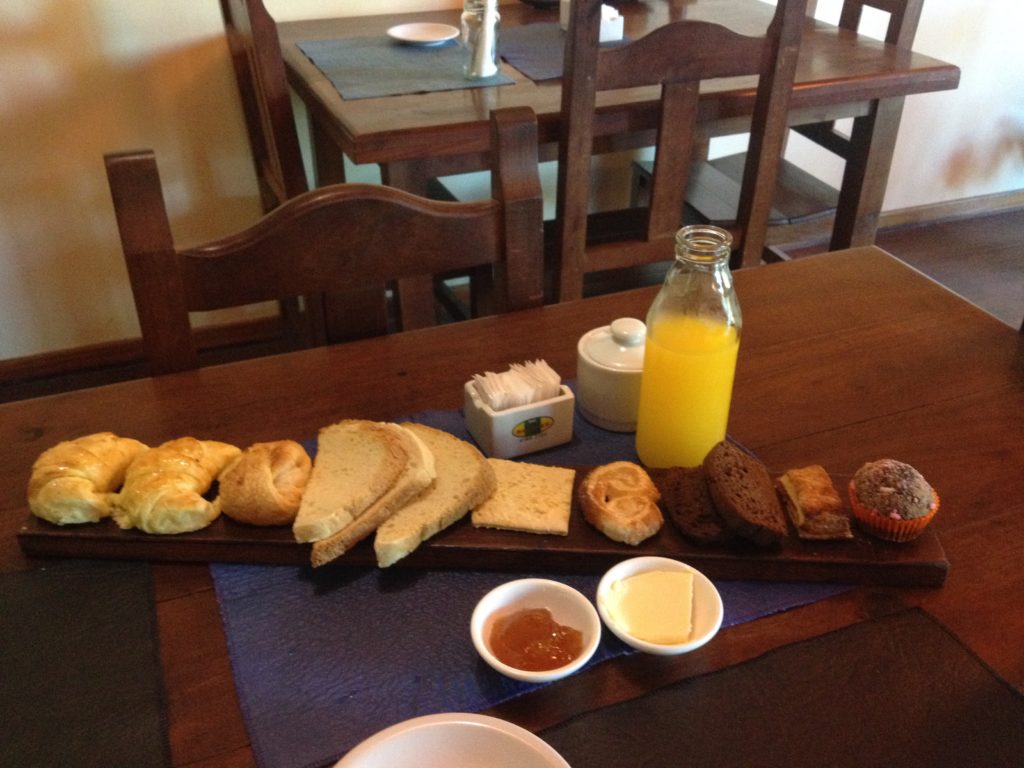
Due to the lack of interesting food, and also the ‘extreme’ cost of eating food out – for example $10 AUD for a plate of pasta covered in bland cream sauce – we stayed in a lot of places that were self-catering. So our breakfast of choice was some good, healthy fibre-based cereal covered in fruit… (actually some of the fibre cereal was perhaps not very healthy…. but the fruit part was 🙂 )

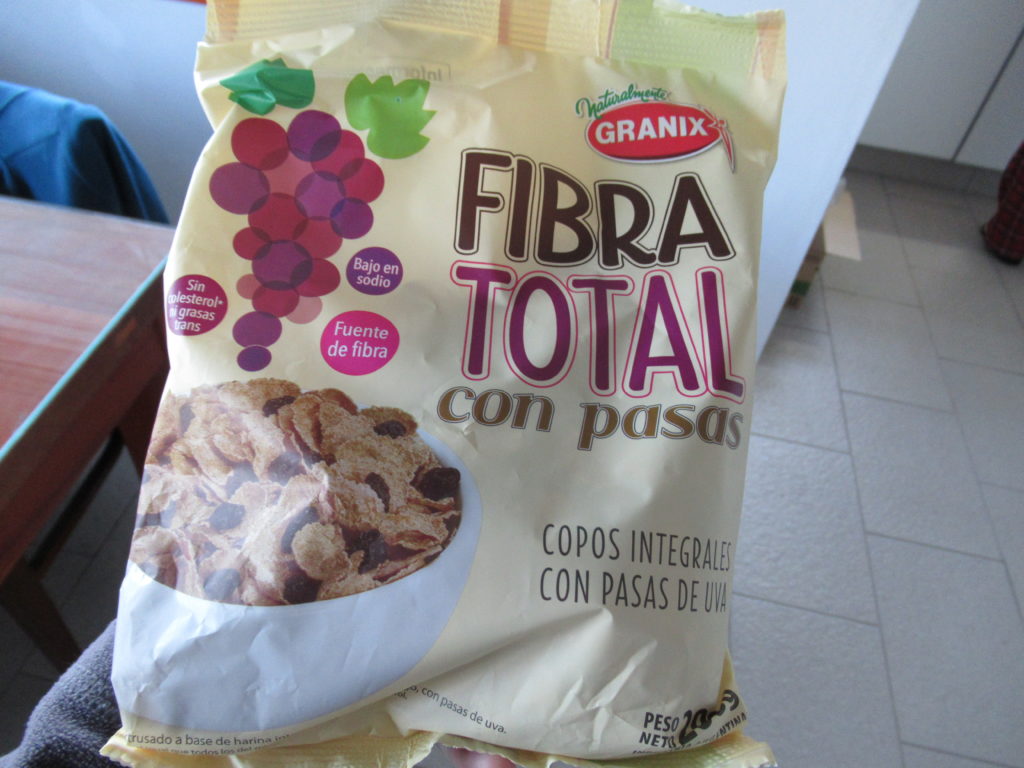
Lunch and Dinner
Lunch and dinner were the weakpoints of Argentinian cuisine.. 🙂 Generally speaking, the most common options were:
– overpriced pasta
– reasonably priced but not often tasty pizza
– very expensive barbecued meat (the world famous parrilla restaurants, based on an asado cooking style..)
– milenesas
– empanadas
Now, I imagine the parrilla places to be pretty good – but CC doesn’t eat meat, and generally speaking it’s a shared experience – and they don’t have a lot that is not meat! (if anything at all….) – so we did not partake. I will mention, that even if CC did eat meat, we probably wouldn’t have gone to a lot of parrilla restaurants, because they tend to be pretty expensive compared to other options… YES, if you want good meat, you must pay the price!
The milenesas varied in quality, and usually came in the form of chicken or veal. The chicken ones were pretty much like chicken schnitzels that are available in pubs all over Australia. BUT…to be honest, I’ve had better ones in Australia….anyway, somehow I managed to not even take a picture of a milenesa, so you will need to visit the wiki links if you are desperate to know what one might look like…. 🙂
Empandas in Argentina were ridiculously small, and often sold by the dozen. Apart from in a few places, there was only ever a few options for the filling (meat, or ham and cheese usually). The ham and cheese ones were dire… although I haven’t written about food in Chile yet, I am going to tell you now that the empanadas in Chile blow the Argentinian ones out of the water….. (except in El Chaltén…)
Occasionally we discovered gold, and found a ‘pay-per-weight’ restaurant. These were GREAT…. cheap, tasty, and lots of variety. BUT, they were very hard to find… 🙁
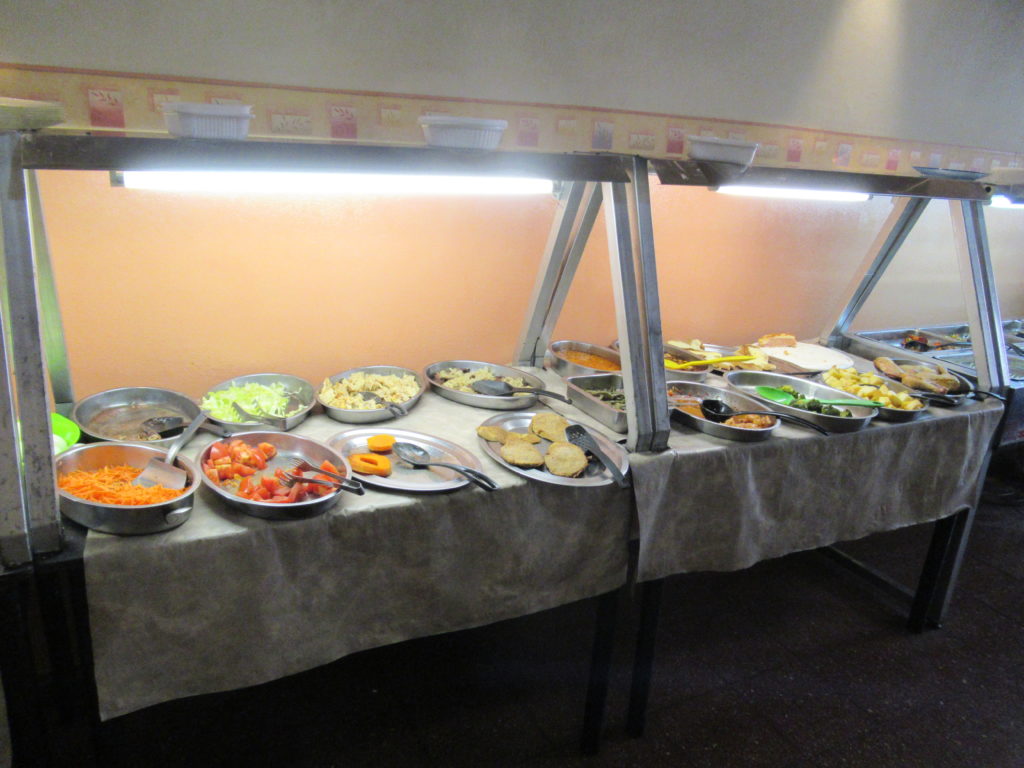
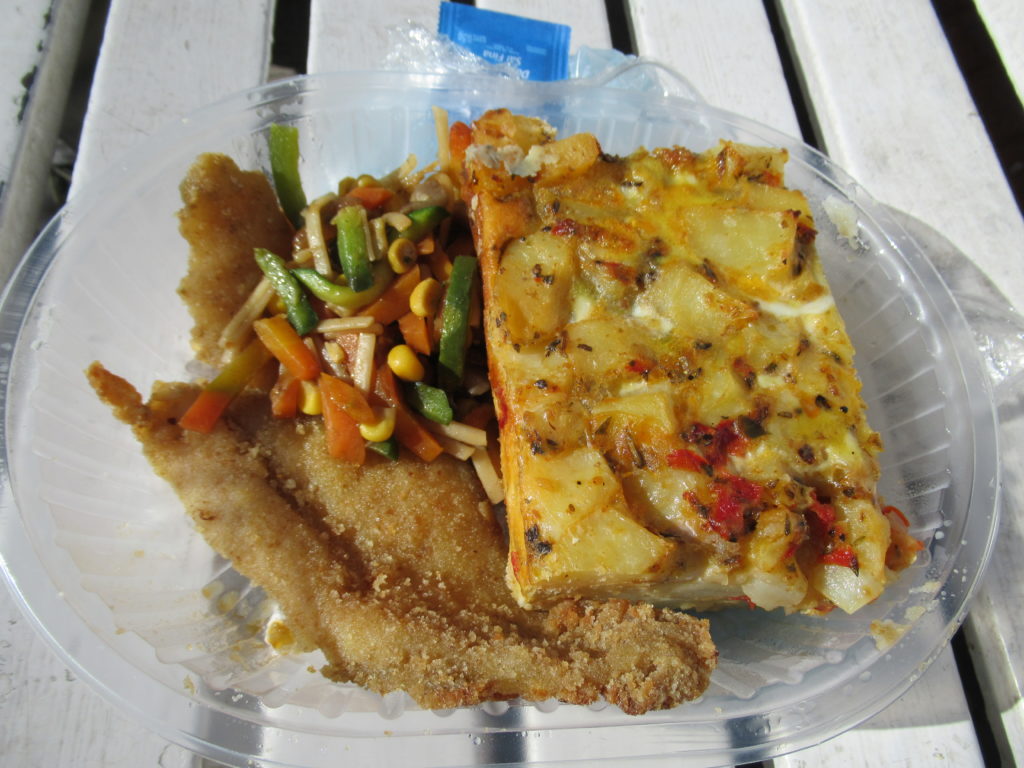
Self Catering
Given the lack of good eating out options, we did a lot of self-catering in Argentina. Fortunately there are a lot of airbandbs in Argentina, and also a culture of ‘cabañas’ for rent – which are basically self-contained holiday cabins, which usually have cooking facilties.
The main problem we had was that believe it or not, most supermarkets did not sell any chillis. Yes, I’m serious – and also most supermarkets did not sell any kind of hot spices…. no cayenne, chilli powder, curry powder.. etc. We spent many an hour looking for products that would add a bit of spice to our food – but often had to settle for what we called ‘bean surprise’ – basically beans and vegetables – the surprise being that we would never know if what we had found to add to it would actually make it spicy… yes even cayenne in Argentina turned out to be some kind of ‘not very spicy’ cayenne – how they managed this I don’t know…
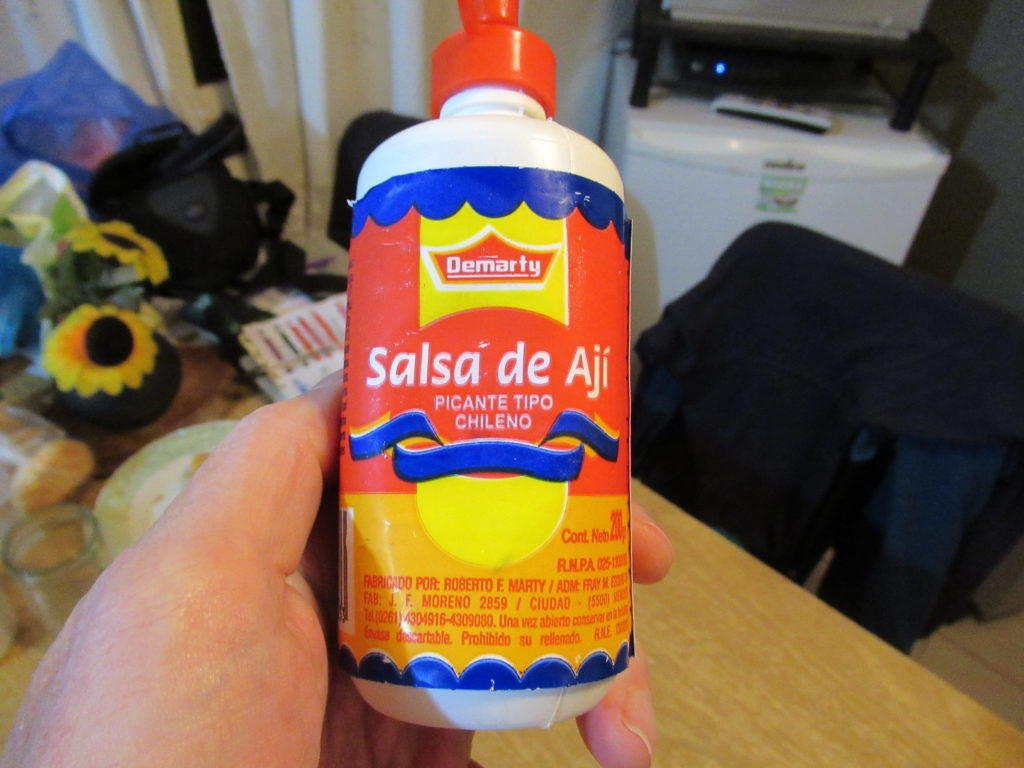
Street Food
The other problem with Argentina, is that there really isn’t much street food available… I think it’s just not really the done thing compared to other South American countries. When it’s available it’s not even very cheap either…. yes, one complaint after another… 🙂
Panchos (hot dogs) were always reasonably priced – and they will always have a special place in CC’s heart as the first meat product that she ‘adapted’ to eating in South America (also, the pancho stand is one of the few places in Argentina you can usually find some kind of spicy sauce (in the west anyway…))
Another street snack at a reasonable price was Tortas Fritas – again, quality varied wildly – but they were NEVER as good as ANY that we found in Uruguay….

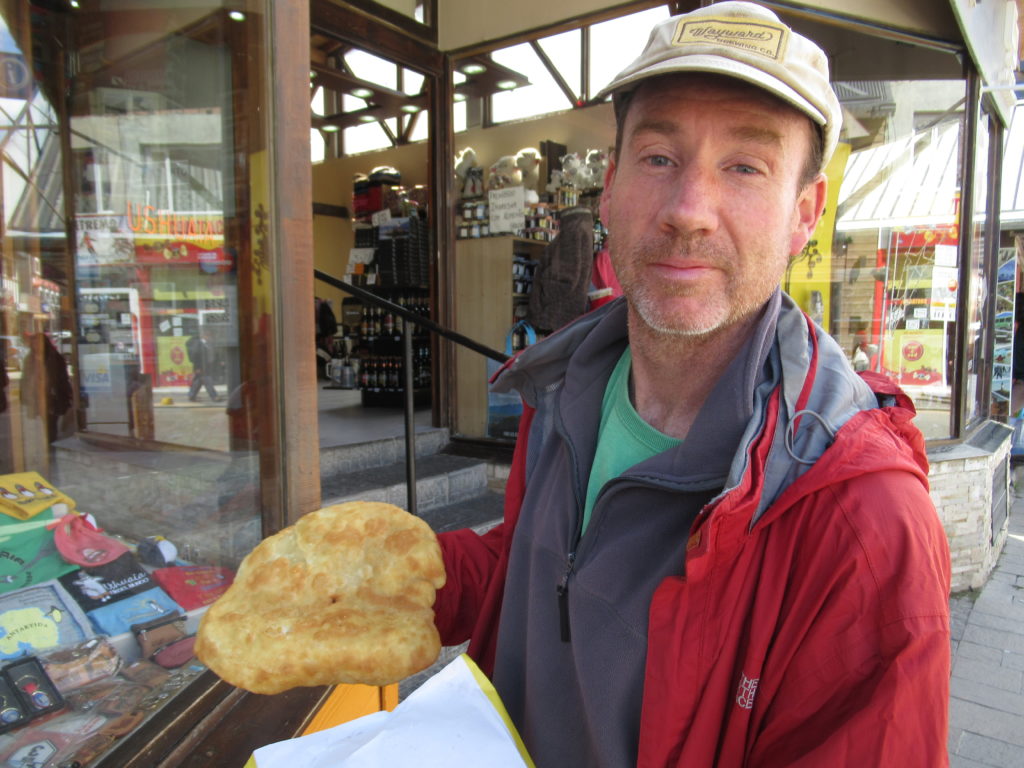
Last, but not least for the street snacks were Lomitos – these are basically steak sandwiches – they were actually very good. Unfortunately, even buying one in a park was quite pricey compared to other options… and of course – no spicy sauce on them…
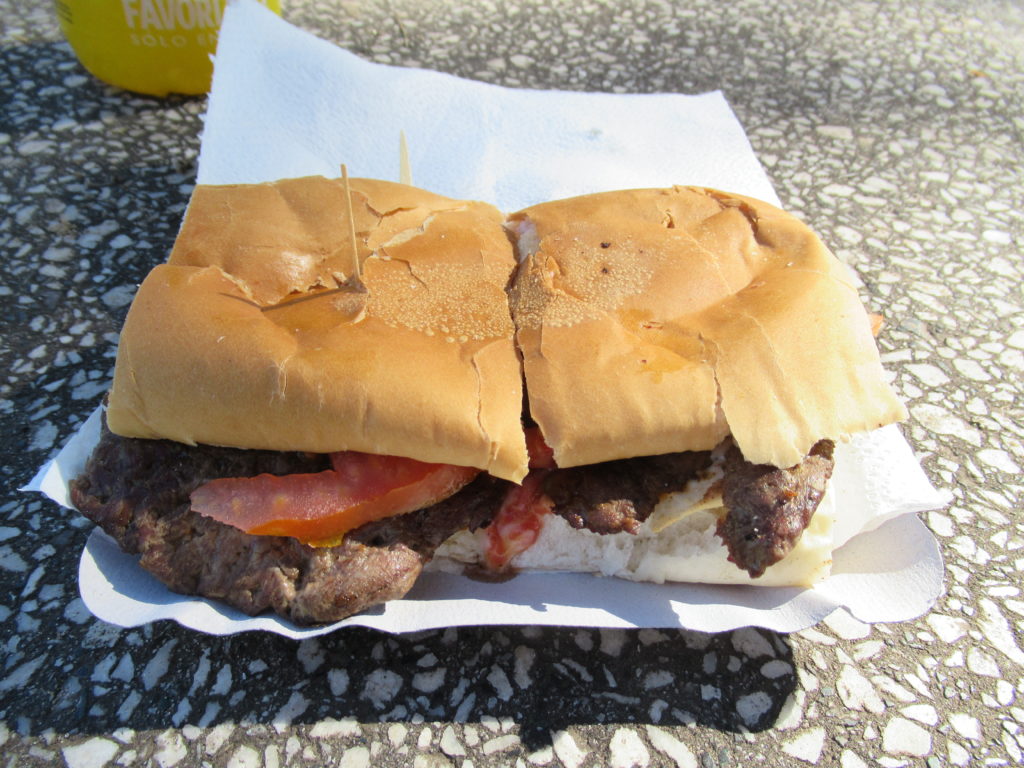
Desserts
Now, at last we start to come to Argentina’s strong point when it comes to food… yes, they were pretty good at desserts and anything sweet…and although the dulce de leche was not quite as good as in Uruguay… it was still pretty damn good!

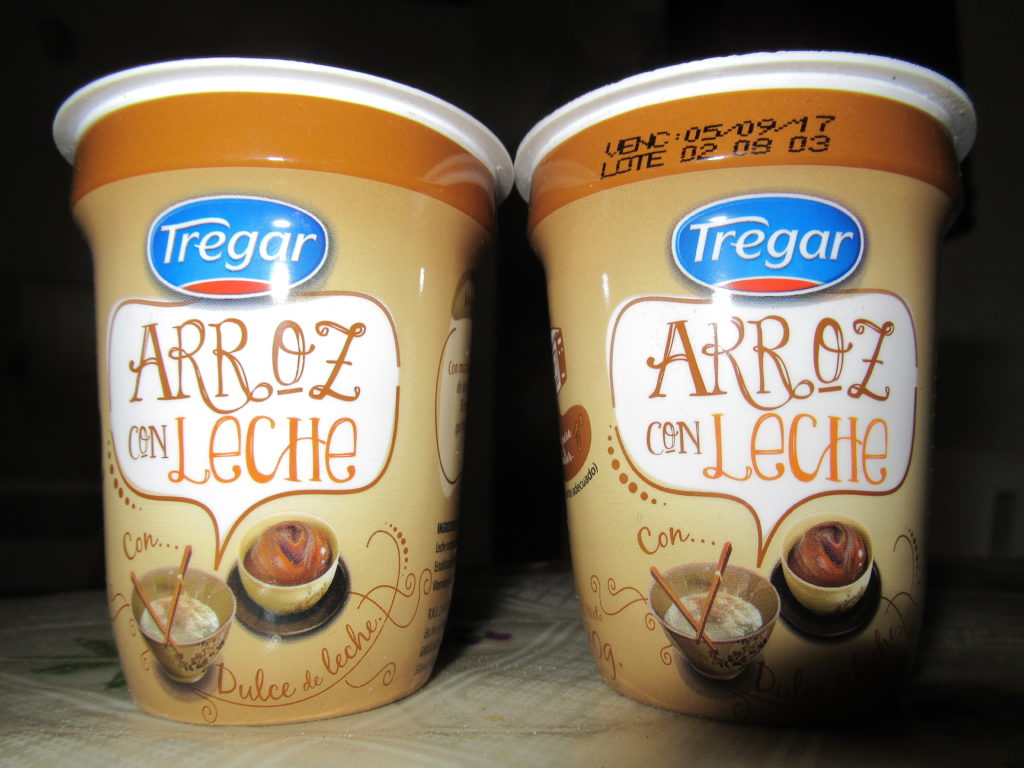
Alfajores
Now, Argentina has more different kinds of Alfajores that you can actually imagine! YES, it’s true – we literally saw a different alfajor EVERY DAY… OK, that’s a gross exaggeration, but you get the picture…. they were generally very good – so we of course had to try out as many different varieties as possible…. so, here is a small gallery of alfajores!

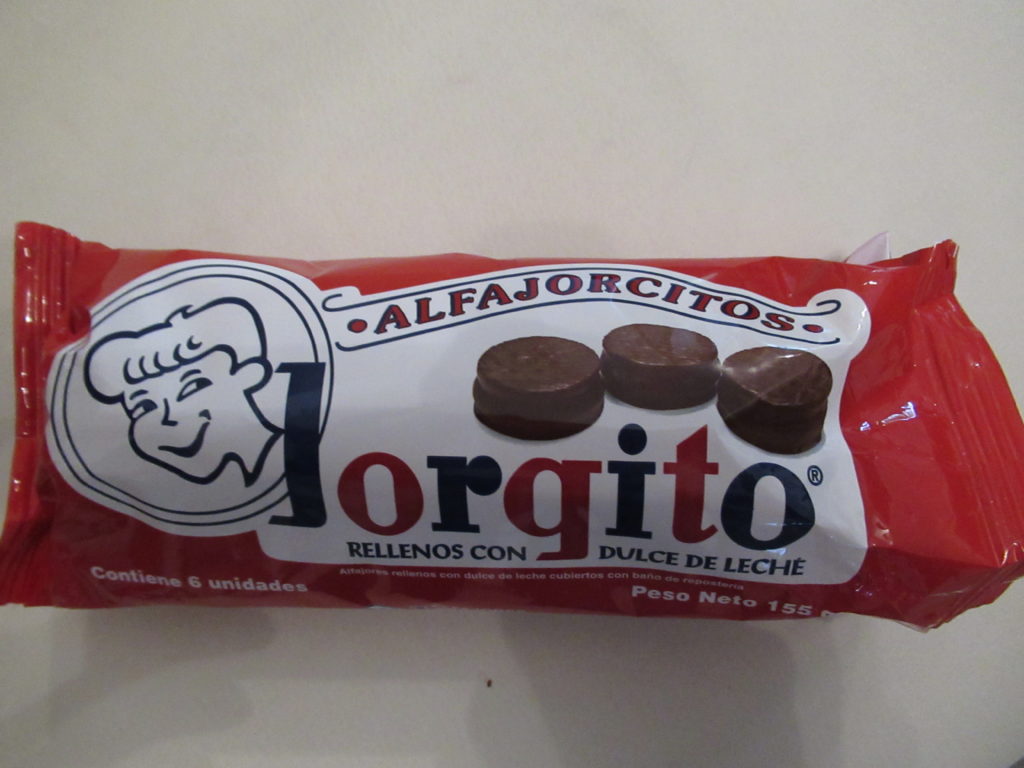

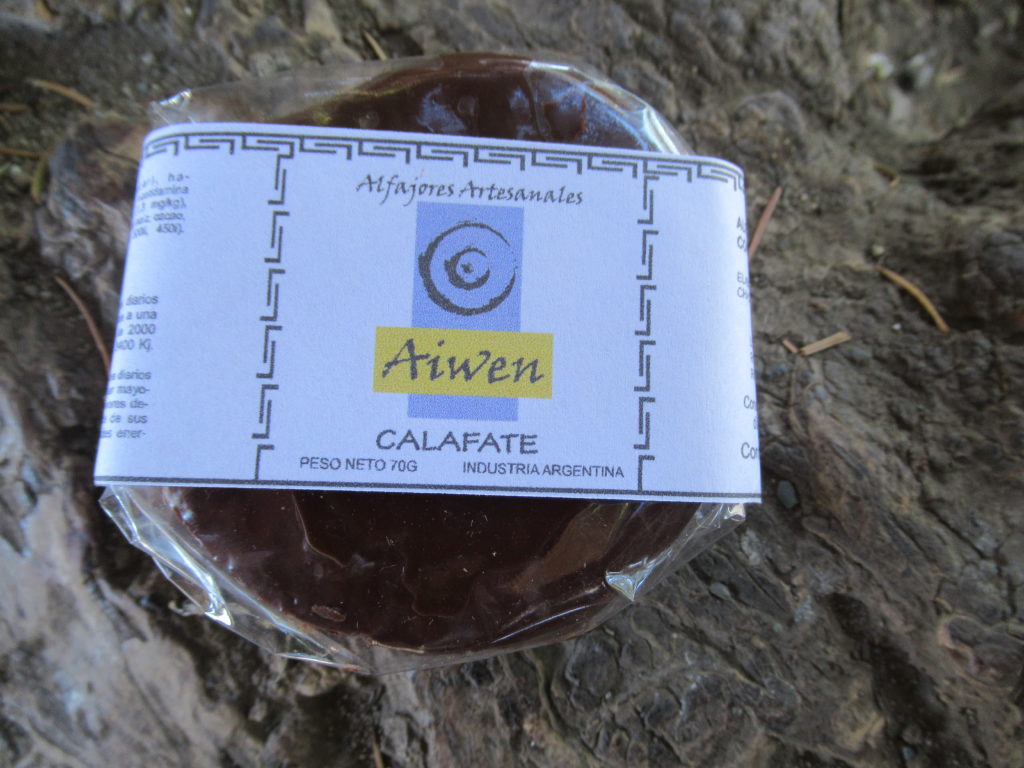
Packaged bus and hiking snacks
We travelled many kilometres on buses in Argentina (it’s very big you know…), and also we went on quite a lot of hiking trails (day trips only). Both of these occasions require a good supply of portable snacks. I can happily report that Argentina excelled in this area, with many delicious biscuits etc available…


Ice cream
So, now at last we come to the thing that Argentina really excels at… ice cream! Or more correctly, you might say gelato. Yes, there is a difference – although gelato just means ice-cream in Italian, it is made in a slightly different way – you might call it ‘ice cream made in the Italian way’ – but ‘gelato’ is simpler….
Anyway, it is available almost everywhere and in a great variety of flavours. Even the huge branded chain gelato places have quite decent gelato, and some of the smaller places have AMAZING gelato. We ate gelato for our ‘afternoon snack’ countless times, with dulce de leche flavour being the ‘go to’ flavour, generally along with a fruit-based flavour such as lemon, and a random third flavour (usually we shared a three-flavour tub). We also managed to try quite a few interesting flavours along the way, including mate flavour, and various berries that we had never heard of.
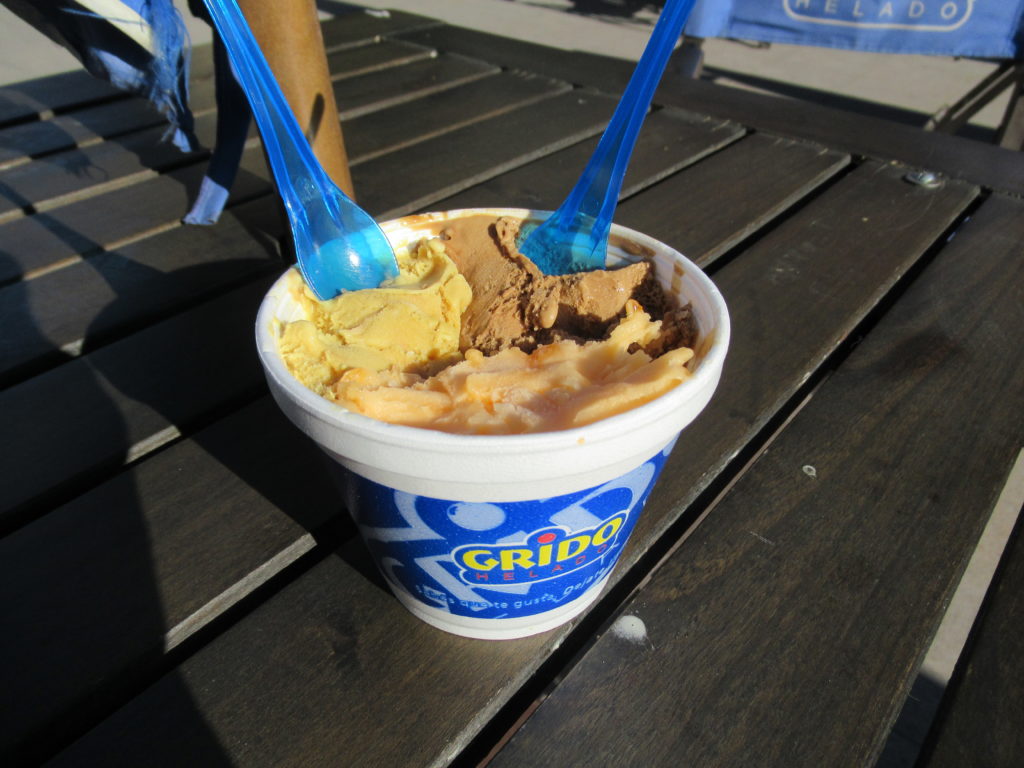
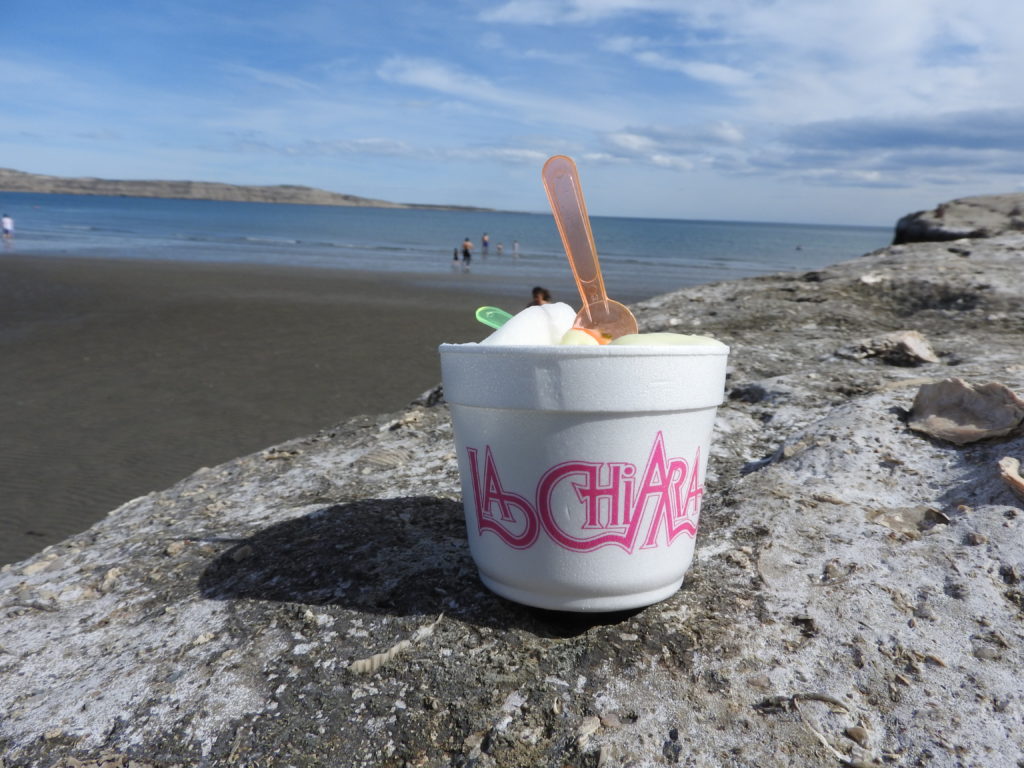
Soft drinks
The usual variety of soft drinks were available, but we found one that we really loved – it was a grapefruit flavoured fizzy drink. There were a few brands available, but the one that tasted the best was called ‘Paso de los Toros‘. We were surprised to find that when we left Argentina, grapefuit-flavoured drinks were really hard to find. So thumbs up to Argentina for providing ‘pomelo’ drinks of all kinds. Ironically, when we looked up our favourite brand ‘Paso de los Toros’ – it turned out to be Uruguayan and not Argentinian! So, Argentina once again outdone by the Uruguayans -)
Mate
Now of course we have mentioned mate before – and Argentina is very famous for mate. We tried a few brands, but one of them in our view excelled – and we drank it for nearly all of the time that we were in Argentina, as it was available everywhere. It’s from a very small town on the border of Corrientes and Misiones provinces, and it is called ‘Playadito’.
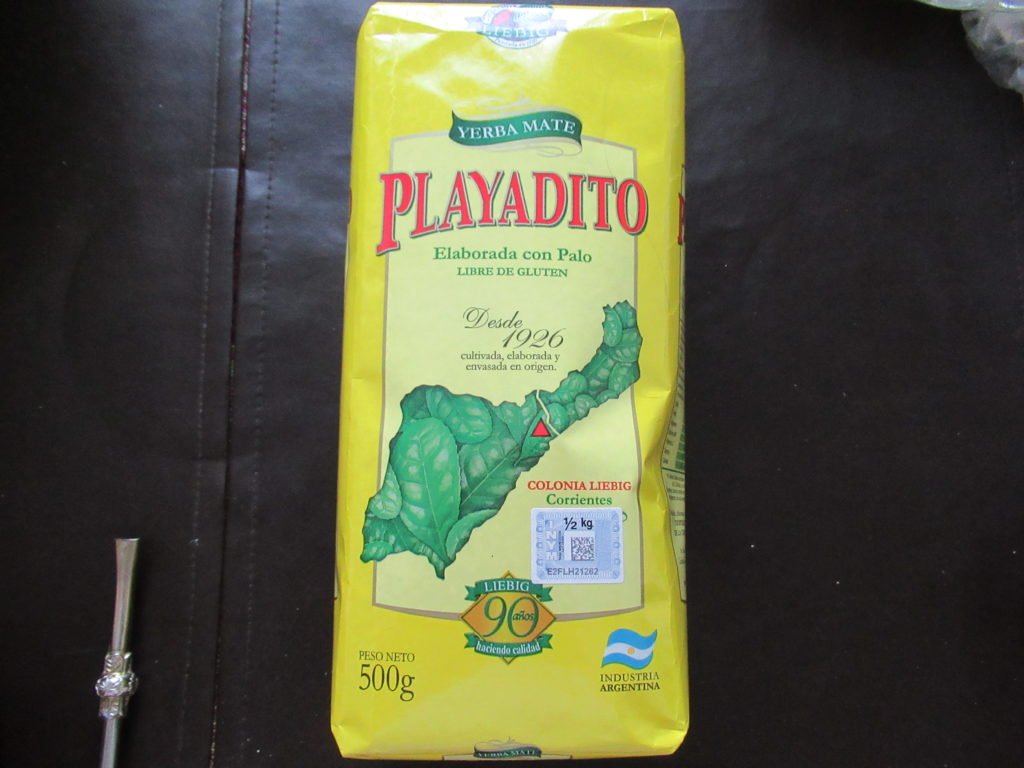
Alcohol
We enjoyed some very good craft beer in Argentina, and at a reasonable price compared to other things in Argentina (and the prices of craft beer in neighbouring countries).
The national alcoholic drink was also excellent! 🙂 It’s called fernet, and like a lot of things in Argentina, has its origins in Italy. It’s a distilled grape spirit with herbs and spices added.

The wine was also excellent, and very good value. Argentina is famous for its wine – especially for its malbec variety. There were lots and lots of brands, and we could try a different malbec for around AUD $6 pretty much whenever we wanted to.
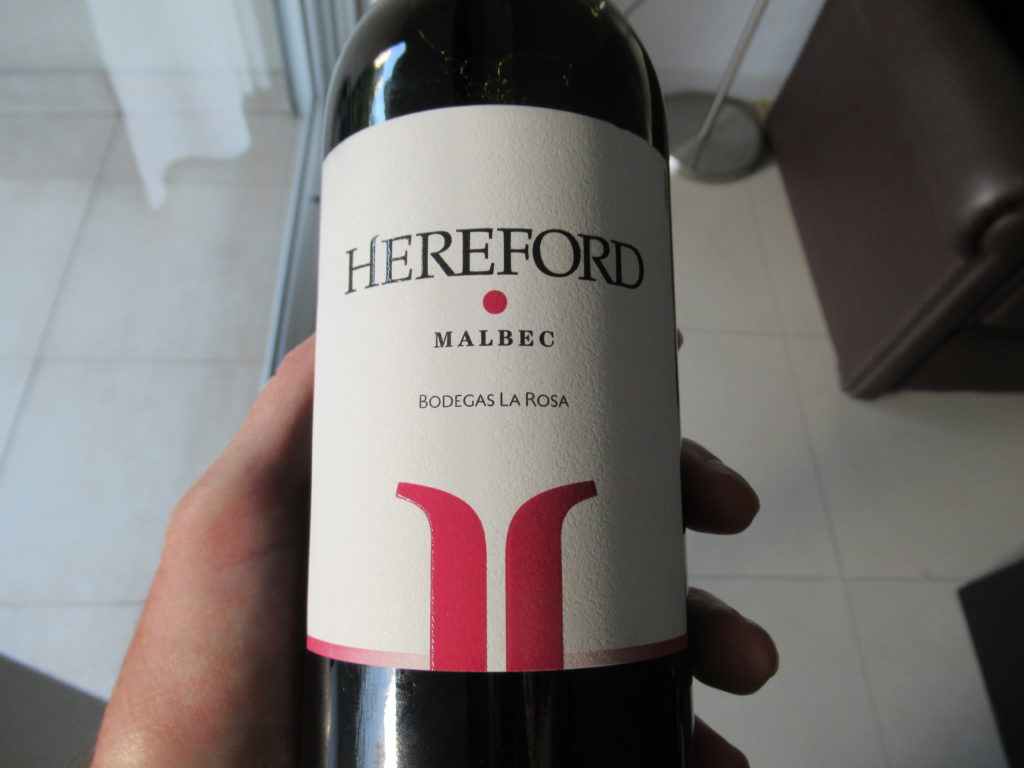
Coffee
So finally we come to coffee… I’m going to be direct here and say that the coffee is CRAP. Yes, this was a surprise to us – you would think with all the Italian influence, and also coffee-growing countries near by, that you might end up with some great coffee – but no….
There is in fact quite a coffee culture in Argentina. There are coffee places everywhere, with proper coffee-making machines etc. Lots of places we stayed provided coffee plungers, and people do drink a lot of coffee.
So…. what is the problem? Well, in one word – SUGAR.
It’s not that people like to add sugar to their coffee – that’s up to them – but the fact that Argentinian coffee is roasted in a different way to normal. We discovered this as we picked up packet after packet of coffee from the supermarket shelves, and looked at the ingredients. On each and every one, it said:
INGREDIENTS: Coffee, Sugar.
WHAT! They add sugar to the coffee before they put it in the packets??!?! Surely not… that’s TERRIBLE!? Well in fact they don’t add sugar to the coffee, BUT what they do do, is roast the beans in a special way called ‘Torrefacto‘ – which involves the addition of sugar at roasting time. I was shocked to find out that they do this in some other countries as well – as it makes the coffee taste CRAP (in my humble opinion…. 🙂 )
Enough sugar becomes part of the final product that they have to list it as an ingredient on the side of the coffee packet. Yes, sad isn’t it? In Argentina, the packets are labelled as ‘Café torrado‘.
We had to scour the supermarkets for any coffee that had not been doctored in this evil way, and apart from a few very expensive high-end gourmet coffees we were left with only two options?! One of them was imported Nescafe from Brazil?!?! WTF?!
A sad story indeed…
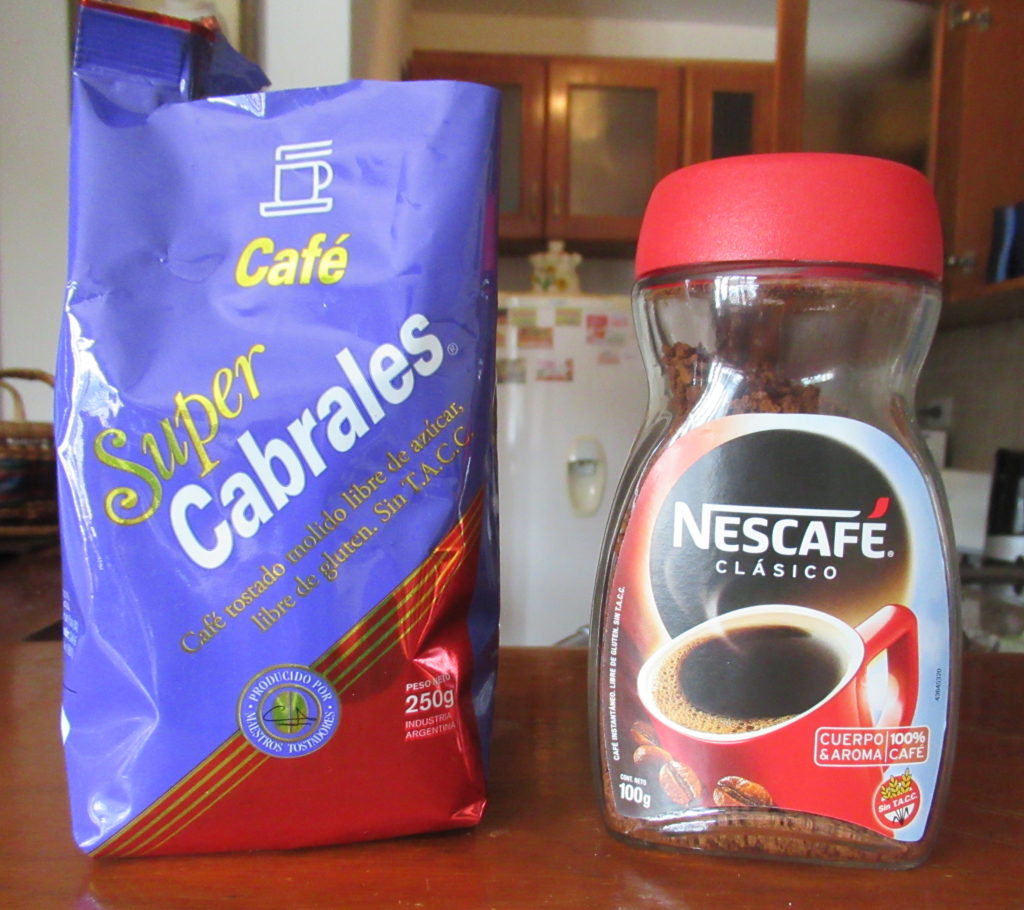
So, there we have it – if you like desserts, gelato, alcohol, and mate – then Argentina is the place for you! 🙂 ….. as long as you also don’t like spicy food and vegetables, or anything with a strong flavour…. and you love to eat meat…
So for us, the food in Argentina didn’t quite hit the spot – but I am sure that there are quite a few people who would love the food there 🙂 ….. people who have known me for a very long time, will probably be thinking right now – ‘yes – YOU – PB…. 15 years ago you would have LOVED the food in Argentina…..’ 🙂
